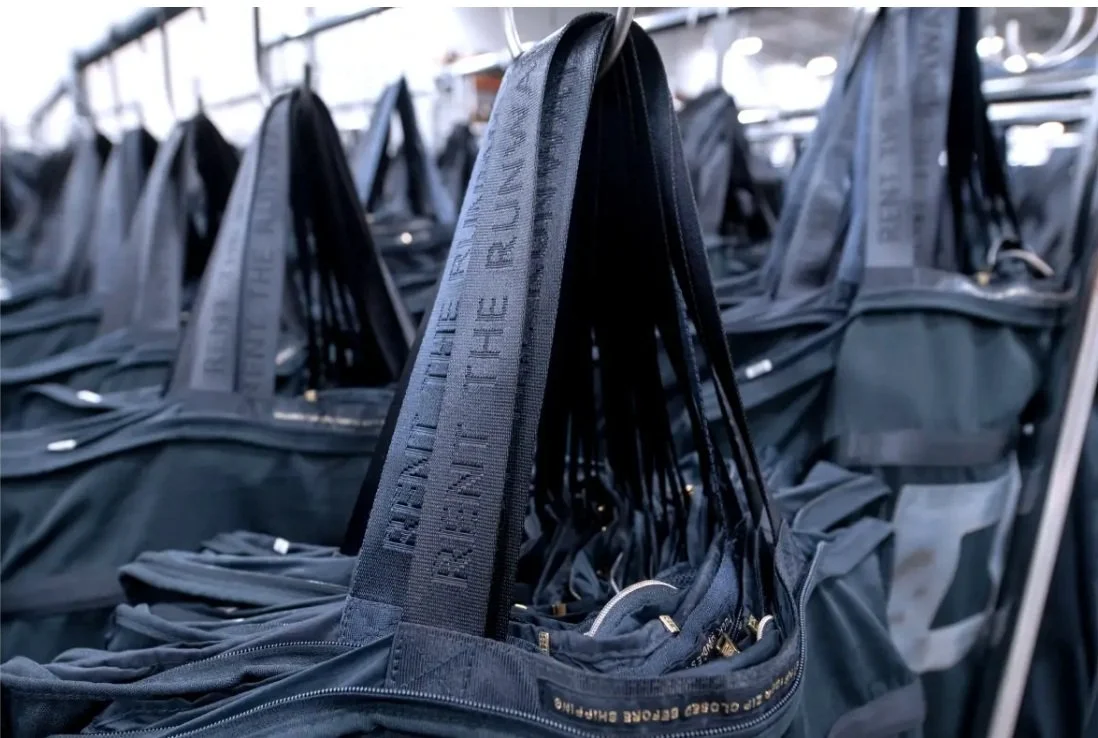Here on SOSNU Co., I have spoken at length about alternative shopping methods that are considerably more sustainable such as clothing rentals, subscription services or shopping second-hand. With the recent research I’ve done on fashion rentals, one of the larger problems was excessive laundering and dry cleaning by the service provider. I also wanted to know the effects it had on our environment. When one thinks about how the clothing rental industry has ballooned to an unforeseen value of $1.26 billion...that’s big business to say the least. And because the clothing rental platforms offer free laundry and professional dry cleaning as a standard service for their customers, the offering is quite imprudent and detrimental to the condition of the clothing and our environment.
As a result of its harsh cleaning processes, dry cleaning can ruin clothing. It is a method that has a major impact on the environment because it requires much more energy than doing laundry at home. The primary reasoning for dry cleaning’s toxicity lies in the main chemical, perchloroethylene (PERC). It is also a threat to the public at large because it is found in our groundwater and soil. Excessive exposure to this toxic air contaminant is linked to diseases among garment workers. There have been a vast range of health issues associated with dry cleaning. These include headaches, memory loss, limited mobility, and more severely respiratory failure and cancer.
The Future of Eco-Friendly Dry Cleaning
Changes starting in California & Minnesota
Following evaluations of PERC exposure levels in California, The California Air Resource Board (CARB) approved regulations to reduce PERC emissions from dry cleaning operations. California become the 1st state to ban use of PERC. In order to meet Jan 1, 2023 deadline for eliminating PERC usage in dry cleaning operations, the state provides financial incentives to the dry cleaners to switch to non-toxic and non-smog forming alternatives. Legislations also requires CARB to impose $3 per gallon fee on importers of PERC for dry cleaning operations. The fees collected provide grants to dry cleaners switching to clean technologies.
The Legislature of Minnesota have enacted an act banning usage of PERC, which will come into effect after Dec 31, 2025. There will also be reimbursement of $20,000 to owners and operators of dry-cleaning facilities for transitional expenses from PERC to alternative solvents.
Instead of Dry-Cleaning…Wet Clean and its Benefits:
Leave fresh natural scent instead of chemical odor
Uses water and mild biodegradable detergents
No PERC, chlorine, or phosphates
Decrease in epidermal issues and process is hypoallergenic which is more suitable for sensitive skin
Less felting, matting and friction thanks to gentle drum rotation with water showering
Companies going Green:
There are few companies continuing toward the dry-cleaning environmental response using innovative, non-toxic and non-smog forming cleaning technologies. Here is a list of vendors and suppliers across the nation whose leading expenditures are water-based and carbon dioxide (CO2) cleaning systems.
Oxwash.
Oxwash is an innovative wet cleaning capability and sustainable laundry service that supports several fashion retailers, specifically ones that provide clothing rentals and returns. There sustainable laundry service operates on a circular economic model that reduces water, chemicals, and energy use in the washing and wet and dry-cleaning process. Oxwash aims to avoid toxic chemicals and reduce pollution in the garment and textile industry by only using water and biodegradable detergents. They wash garments at 20ºC which reduces emission by 45%.
To further promote the company’s carbon neutrality mission, Oxwash has a fleet of electric cargo bikes that their employers use to collect clothing. These cargo bikes do not emit any hazardous gases or noise and light pollutants. Lastly for re-commerce, circular fashion renters and sustainable companies looking for efficiency and quality laundry cleaning services, Oxwash offers 48-hour turnaround within their metro areas (London, Cambridge and Oxford).
Rent the Runway (RtR).
RtR has the largest in-house dry-cleaning facility in the world. Their quality assurance teams are committed to enhancing the efficacy of cleaning processes and increasing rental garment longevity. Upon a garment’s return, each items completes a wet, dry, spot or hydroxyl cleaning process using biodegradable detergents free from added fragrance, zeolites, halogenated solvents and PERC. Afterwards, the items are steamed between 248oF and 302oF in a steam tunnel, and then sealed in a polyplastic covering to preserve their quality.
In efforts to be more environmentally sustainable, RtR ask customers to return their plastic coverings and hangers, along with their reusable garment bags. These items can be reused and recycled. RtR’s recyclables are transformed into wood-alternative building materials thanks to a partnership with Trex.
Sources:
California Air Resources Board
https://ww2.arb.ca.gov/our-work/programs/phase-out-perchloroethylene-dry-cleaning-process
Minnesota Statutes, 92nd Legislature
https://www.revisor.mn.gov/laws/2021/0/Session+Law/Chapter/5/
Oxwash
RTR


